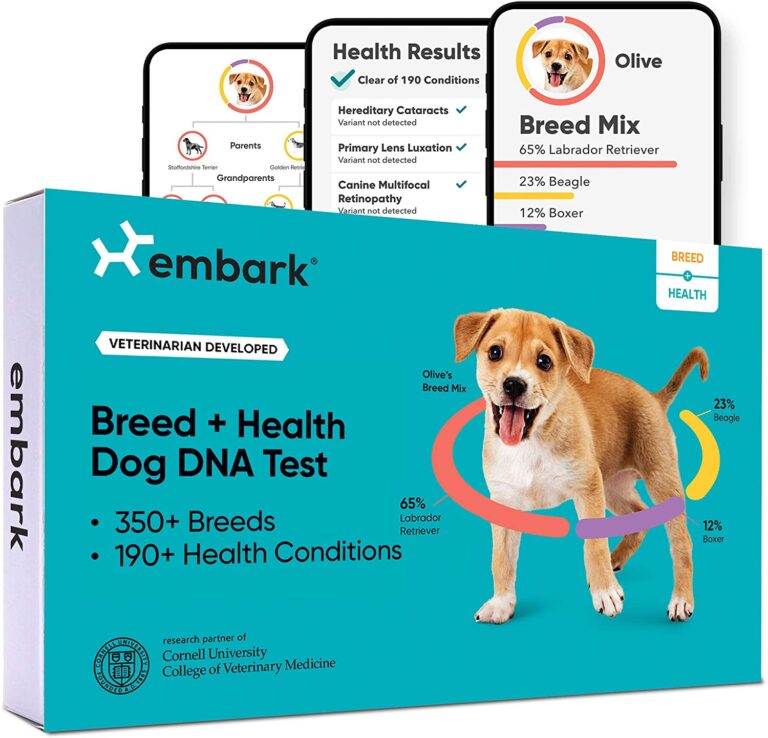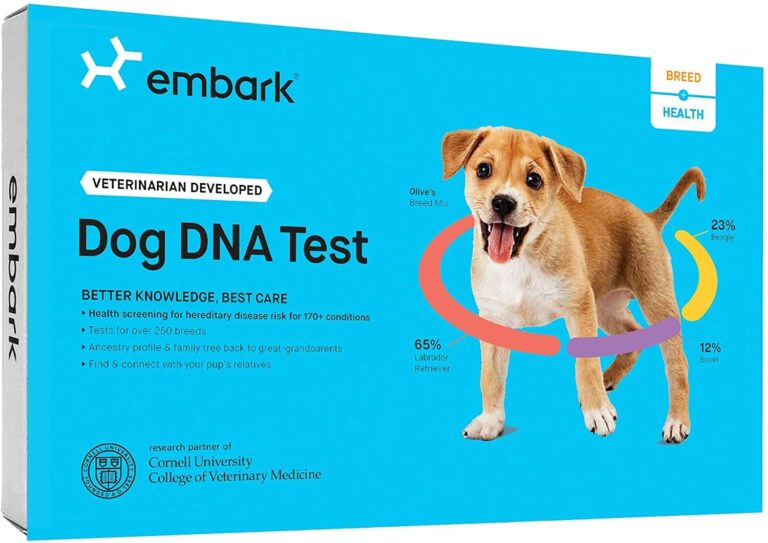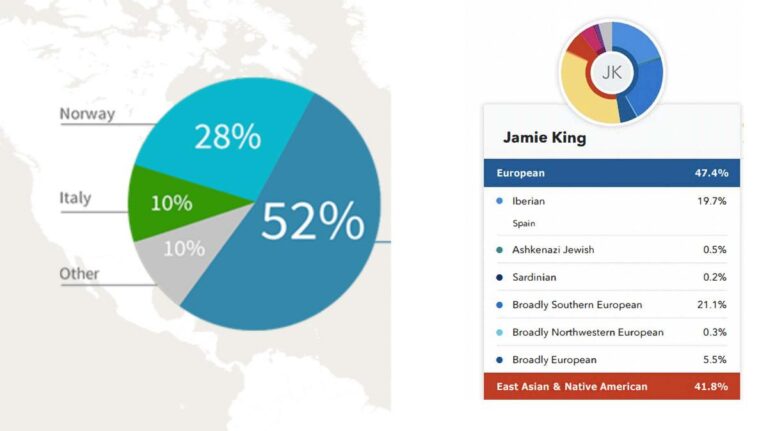Are DNA tests for dog breeds accurate?
How does dog dna test work?
While owners may be concerned well about the accuracy of dog DNA testing, the results are usually extremely accurate if you use a reputable dog breed identifier test kit.
Many dog owners are taken aback by their canine’s DNA ancestry test findings. It’s not always easy for
owners to realize that their assumptions about their dog’s genetic origin are inaccurate.
We’ll illustrate how dog DNA tests pledge to accuracy in this post, as well as debunk some prevalent
fallacies about dog genetics and lineage.
Can Dog DNA Tests Reliable?
Although the grade of accuracy varies based on the instruments used to assess canine ancestry and the
complexity of the laboratory employed, dog DNA testing are generally fairly reliable.
What Affects the Accuracy of Dog DNA Tests?
A dog breed test’s accuracy can be influenced by a number of factors, including:
1. Owners Provided a Sample
To determine a dog’s breed ancestry, the most of dog DNA kits use a cheek swab DNA sample. Owners
must take a DNA sample from a cheek swab and send it to a lab, which and presents the results.
While customers will appreciate the convenience of collecting samples at home, the quality of the DNA
sample can’t always be assured.
The dog DNA test’s accuracy varies based on the sample obtained by the owner. This is why it’s critical to carefully follow the directions supplied with canine DNA testing kits.
2. The Quantity of Genetic Markers
Genetic markers are variations in a dog’s genetic structure that help experts figure out what breed your dog is. Comparing and contrasting these genetic markers across breeds can help uncover distinctive signatures. This indicates that dog DNA testing kits with much more genetic markers are more accurate than those with less.
3. Dogs: Number and Types
The amount of breeds in a dog DNA testing lab’s database has an impact on accuracy as well. The more
breeds in the DNA data, the more accurate the test.
4. Confirming Test Precision
The correctness of a dog DNA test can be determined by evaluating the results repeatedly with objective
third-party specialists and geneticists.
Common Misconceptions About Dog DNA Testing
Despite the fact that these testing kits are normally highly reliable, some dog owners still doubt the dog
DNA test’s authenticity due to prevalent dog genetics and breeding misconceptions.
 Canine DNA Test Myths
Canine DNA Test Myths
Myth #1: Because my dog does not resemble that breed, the tests must be incorrect.
When their dog does not resemble the breed allocated to them by the dog breed identification test, several owners doubt the veracity of your dog DNA test results.
“How can my Chihuahua be a Chihuahua?” He doesn’t even resemble a Chihuahua! ”
The fact is that visual breed identification is frequently incorrect. According to recent studies, eye
identification of dog breeds is only accurate approximately 25% of the time!
Dogs might exhibit aesthetic characteristics of breeds that don’t necessarily connect with their closest
relatives, just as children can appear very much like their grandparent than their parents.
It’s also worth noting that some breeds have morphological qualities that are primarily recessive (such as the Yorkshire Terrier).
Even though the dog of a different breed has Yorkshire Terrier ancestry, the dog still may look superficially like a rare variety, even if the alternative breed only makes up a small proportion of the dog’s DNA.
On the other hand, certain dog breeds have more dominant qualities, thus your dog may appear to be an Irish Wolfhound while actually having a genetic composition more akin to another breed.
Remember that a dog’s “appearance” is not always indicative of the breeds present in the dog’s genetic
makeup.
Myth #2: My dog’s veterinarian told me he was of this breed, therefore it must be true.
Many dog owners would claim that they took their dog to the veterinarian, who told them that their dog was most likely a Labrador or German Shepherd. The vet must be correct because they are an expert, right?
Well, not quite. Veterinarians frequently make conclusions about a dog’s lineage based on its appearance.
Physical dog breed recognition is only reliable 25% of the time, as previously stated.
Your veterinarian can determine your dog’s breed based on his outward appearance, but this is only one component of his disposition. Your veterinarian does not have accessibility to your dog’s DNA or
behavioral peculiarities and behaviors, which can reveal a lot about a dog’s breed background!
Myth #3: I possess paperwork from a breeder stating that my dog is purebred, and therefore DNA test
must be incorrect.
Some people believe that if their breeder says their dog is purebred, it has to be true. Unfortunately, not all Breeders are honest about their pets’ heritage.
Which DNA tests for dogs are the most reliable?
We recommend Wisdom Panel 2.5 if you want a canine DNA test that you can rely to be reliable.
Wisdom Panel 2.5 is a dog breed identifier assessment that tries to be as accurate as possible. They have accomplished this by:
To evaluate DNA, researchers used 1,800 of the most revealing genetic markers.
Over 200 dog breeds, as well as variations, have been tested.
To ensure quality control, testing is conducted in a USDA-approved laboratory.
Many canines were tested several times, resulting in total repeatability of over 99 percent.
How do DNA tests for breed identification work?
A portion of your dog’s genes (or portions of their DNA) are compared to a database owned by a company providing the test. Each company has its own database, which has a variable amount of breeds and individual dogs. The more breeds in their database, the further precise their findings should be, which is often represented in the test fee.
It’s far from a precise science. There is no such thing as a Collie or Labrador gene. Rather, dogs within such
a breed carry more genes with one than dogs from different breeds. The companies are hunting for
breeds that are comparable to your dog in their databases. Matching your dog’s genes to certain breeds might be challenging and misleading if your dog does have a complicated past. Each organization has its own algorithms for sifting through data and making decisions.
Can we trust DNA tests for dog breed identification?
If you transmit your dog’s DNA to several firms, the findings may vary due to the differences in their
procedures. The most prevalent breeds in a dog’s pedigree should be easy to spot. Perhaps a purebred
ancestor or a breed popular in the area where they were born. Different companies should match prominent breeds.
It might be difficult to determine which breeds are present in a mixed breed dog. It will be hard to
differentiate ancestral breeds that have been weakened by generations of different breeds mating. Different companies will arrive at varied conclusions regarding which breeds are involved, resulting in different outcomes. As a result, the more breeds that make up your dog’s genetic makeup, the less reliable the data will be.
Dog DNA tests have now become standard methods in canine research, notwithstanding their possible
errors. In peer-reviewed studies, commercially available diagnostics meant for home use are used. One study
compared the reliability of 900 canine professionals’ breed classification by sight with the actual breeds of dogs, as determined by conventional home DNA tests. Visual identification has a poor success rate.
If home Genetic tests are proven to be a reliable means of determining breed in academic studies, the science community must consider them comparable to other methods. Research using them would not pass peer review if scientists did not trust them. So, if you utilize a home DNA test to learn more about your dog’s breed makeup, you’re employing the same method employed in cutting-edge science, a method that is widely accepted by scientists.
What about genetic health testing?
When health assessments are included in testing, the science isn’t nearly as robust. They have a sound theory behind them. The firms are seeking specific genes or DNA sequences that have been linked to certain hereditary problems, similar to breed identification tests.
Tests that also incorporate genetic health assessment are newer than tests that merely reveal breed heritage.
They’ve been around the market for about 5 years for household use. They’re still finding their footing as a complicated analytical product.
Why would you want to know about a dog’s genetic health?
Testing for genetic diseases has enormous promise. Healthcare for dogs with preconceptions to particular diseases could be adjusted to their specific needs, and in some situations, could even be preventative. Dogs could be checked before being used for breeding in order to prevent disease carriers from transmitting their genes to future generations.
Pre-breeding screening is currently underway. A recent study looked at the frequency of genetic illnesses in purebred dog populations recognized with the Kennel Club by their breeders. Many diseases are on the decline, according to the researchers, with each lowering just after a test was produced to recognize dogs carrying genes linked to the disease.


 Canine DNA Test Myths
Canine DNA Test Myths





